The benefits of becoming an employee-owned law firm can be cultural as well as financial. As Joanna Goodman hears, for some it is the magic pill that cures the headache of succession
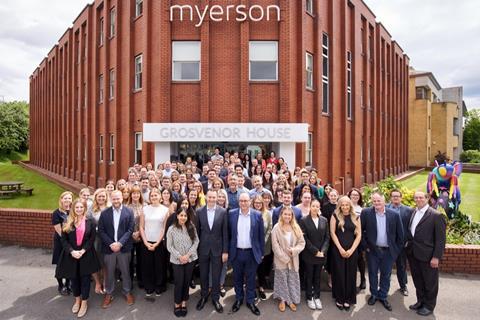
Myerson: converted from an LLP to an employee ownership trust last September
The low down
Law firms are culturally and structurally hierarchical, commonly represented by a ‘pyramid’. So why would partners make the leap to joining the ‘John Lewis economy’ and become employee-owned? Around 30 have done so. It is not right for every firm, but those that have converted note that this is preferable to the alternatives. To let private equity take a stake, or sell to a ‘consolidator’ can provide quick wins for partners worrying their way through succession and being paid out on their departure. But consolidators and private equity have a chequered record in the legal sector. The structure of employee ownership means a longer payout period, but in the meantime can involve and incentivise staff in the running of the business.
It is an intermittently fashionable idea for politicians and progressive economists to promote: would we all be better off in a ‘John Lewis’ economy, whereby employees were also business owners? The argument is that having a stake in the business increases not just employees’ potential rewards, but also their commitment to driving profitability.
For law firms, the way to achieve this is through an employee ownership trust (EOT). This is a vehicle for indirect employee ownership using contributions from the business, rather than requiring finance from employees.
As defined by Postlethwaite Solicitors, ‘typically, an EOT will acquire a controlling interest in a company from its shareholders. Commonly, a price will be agreed which must not be more than market value and payment will then be made in instalments, the EOT being funded by the company from its future profits.
‘Occasionally, a company owner will give their shares to the EOT but in most cases they will wish to be paid. Sometimes it is possible to arrange an external loan which will enable the purchase price (or a larger part of it) to be paid in one go.’
According to the Employee Ownership Association, EOTs provide a stable and long-term structure for employee ownership, look after the best interests of present and future employees, and give employees a collective voice.
The vehicle makes tax and administrative procedures more straightforward than individual employee share or share option plans.
The Finance Act 2014 created a definition of an EOT for UK tax purposes. It also introduced tax incentives. These included a complete exemption from capital gains tax in connection with the sale of shares to an EOT and an income tax exemption for discretionary bonuses of up to £3,600 per year. In last autumn’s budget, the government introduced reforms which included preventing former owners from retaining control post-sale, mandates for UK-resident trustees and an extension of the relief clawback period.
To benefit from EOT tax incentives, a firm has to be more than 51% employee-owned. Paul Bennett, partner at Bennett Briegal, which advises law firms on business structures, observes that successful employee ownership requires the same commitment as taking on private equity.
Although most law firms are now limited companies, relatively few are employee-owned. While the Solicitors Regulation Authority does not provide figures, it is estimated that there are around 30 employee-owned law firms in England and Wales – a small yet highly distinct fraction of its 9,000 or so regulated legal practices.
Business case for employee ownership
'We were approached by other law firms who were interested in buying the firm, but we didn’t want to lose its culture. We had wonderful young solicitors and we wanted to help them into the future'
Melinda Giles, Giles Watson
Succession is an important driver. That is because employee ownership enables outgoing partners to retain an interest in the firm and manage the transition to the next generation without requiring them to buy into the partnership. And unlike selling the business or merging with another firm, becoming an EOT allows a firm to retain its independence, identity and culture.
Boutique firm Giles Wilson, which converted to an EOT in 2022, was previously a two-partner LLP led by siblings Melinda and Philip Giles. Having built up a highly profitable business, the partners were contemplating succession. ‘We were approached by other law firms who were interested in buying the firm, but we didn’t want to lose its culture,’ explains Melinda Giles. ‘We had wonderful young solicitors and we wanted to help them into the future.’
Financing the transition was a key consideration. ‘When my brother and I bought the business, we got a bank loan, but nowadays that isn’t always possible. And as outgoing owners, we were fully prepared to stay on, which we have done, and that has been an important factor in the success of the EOT.’
EOT firms have a less hierarchical structure than traditional partnerships and tend to foster a more inclusive culture. ‘What changed overnight was the [increased] openness and transparency about the future of the business,’ says Giles, who continued as managing partner. ‘We sold 100% of the firm to the EOT, so although as former owners we are owed money out of the profits, we became employees of the firm.’

She adds that people had been worried about a possible sale, but following the transition, they could be certain that this would not happen without their agreement. As a result, she says: ‘We are now working on our second three-year strategy, and new leaders are emerging. It’s been a big success for Giles Wilson and it is very enjoyable to mentor and coach people. As managing partner, I work most closely with those who want to lead – and they are not all solicitors.
‘I am a big believer in social mobility, and traditional law firms are not always the best place for women, or those who don’t come from the sort of background where they expect to be partners in a law firm. But an EOT means they don’t have to borrow money to buy into equity. They can continue working and get involved in the operation of the business. We have an employee council and a board of trustees, which includes a member of the employee council who is elected by the remainder of the team. And we have an EOT day each year to celebrate its anniversary and what’s coming next.’
Like Giles Wilson, succession was a key motivator for Oliver & Co in Chester when it converted to employee ownership in 2022. The firm was approached by a potential purchaser, but managing director Kay Cook and co-owner David Owen were concerned about being absorbed into a larger business.
Cook saw a Gazette article about Hedges Law, an Oxford firm which transferred 10% of its business to an EOT. She contacted the managing director, Nikki Poole, who introduced her to the firm which had managed the transaction. However, tax incentives require a minimum 51% commitment, and Oliver & Co decided to go further. ‘We were initially looking at 80%, but halfway through the process, we decided to commit 100%. Many of our staff had been with us for 20+ years, and it felt like the perfect way to thank everybody and to enable the continuation of the business.’
Post-conversion, Cook introduced management training to facilitate employee involvement in running the firm. ‘We originally had two shareholders and 11 directors, but we are all lawyers, not managers. We introduced management training for all our associate directors, two of whom are now on the management board. And two employee representatives attend trustees’ meetings.’ As an EOT business, the trustee board has to be able to outvote the original owners, so Oliver & Co has a board of five, including one independent trustee.
Oliver & Co had been a limited company since 2009, and had director and associate director roles rather than partners. A big advantage of converting to an EOT was that the sale of the business was tax-free. The firm is thriving under employee ownership and benefiting from increased transparency. ‘We share financial information and we gave all our staff financial training so that they understand how the firm runs,’ says Cook. The only challenge is that ‘it’s a mind shift for [former] owners. You have to appreciate that it’s not your business anymore and you have to let go. But it is also liberating to think it will carry on without you’.
Although EOT is increasingly popular for mid-sized firms with a strong management function, it is a more complex proposition for larger firms, which perhaps explains why it is not an obvious choice. Mergers and acquisitions continue to drive consolidation in this segment of the market. Nevertheless, there are some top-200 pioneers.
Collegiate culture
Employee ownership trusts encourage staff to get involved in the business that they collectively own. Each firm has developed its own initiatives for employees at all levels to contribute ideas and feedback.
The collegiate culture of employee ownership extends beyond individual firms. Kay Cook, managing director of Oliver & Co, is involved in the Employee Owned Law Firm Conference, which has been held each year for the past three years. The first one was hosted by Hedges Law in Oxford; Oliver & Co hosted the second last year in Chester; and this year’s conference was held at Postlethwaite Solicitors in London. Topics included leadership structures, recognition and reward, employee engagement, and branding and identity.
Stephens Scown has introduced a mechanism to turn the employee trustee experience into a professional development opportunity. Digital marketing manager Sam Moles (pictured) recently completed a three-year stint as an elected trustee. ‘Joining a trustee board gives you access to top-level information and the opportunity to engage with senior leaders in the business, and it changes the way you think and act,’ he says. ‘As an employee trustee, I was developing myself as well as the business.’

Moles’ involvement on the board of trustees evolved into a career move after he was nominated employee owner of the year at the Employee Ownership Association conference in 2023.
Inspired by the conference, he pioneered a firm-wide ‘knowledge share’ whereby ‘once a month, we get peers together in a virtual space and talk about employee ownership. Our employee ownership team produced a proposal for our strategic board about what else we could do. Following a governance review last year, we created two new trustee representative positions on our strategic board. In this way, the employee trustee positions are used as a “leadership accelerator” – a straight line from employee owner to strategic direction’. This initiative is designed partly to address the challenge of getting employees to think like business owners.
Mid-market pioneers
In 2016, Stephens Scown became the UK’s first large law firm to convert to employee ownership and give all eligible staff a share in its profits. Its employee ownership scheme, ‘Scownership’, includes a bonus for all eligible staff as well as two trustees elected from the staff.
Stephens Scown has 370 employees and three offices. Corporate partner Gavin Poole, who advises businesses on succession planning and employee ownership, believes that employee ownership helps to pull everyone together. It strengthens the idea of one firm in three locations, rather than three separate branches.
Digital marketing manager Sam Moles, who recently finished a three-year stint as an employee trustee, explains that Stephens Scown had always had a strong culture. Becoming employee-owned was ‘a step on its cultural journey’, as was becoming a B Corp two years ago. The employee trustee role gives junior colleagues an opportunity to develop their advocacy and representation skills, and the firm’s EOT and B Corp status support recruitment and retention.
Although it is 100% employee-owned, Stephens Scown retains a partnership structure, whereby one partner holds a share for the benefit of employees. ‘We are all “Scowners” as we have an interest in the partnership,’ explains Poole. ‘At the end of each year, part of the firm’s profit is shared between eligible employees. Historically, everyone has received the same amount, rather than a proportion of salaries.’
To benefit from EOT tax incentives, the board of trustees has to include an independent trustee not connected with the business. Both Poole and Moles are not only involved with Stephens Scown’s own EOT; they also act as independent trustees for other EOTs.
Until it converted to an EOT last September, top-200 Manchester firm Myerson was an LLP with five equity partners, 22 salaried partners and a turnover of £17.25m. The firm has always had a people-first culture, says CEO Carl Newton: ‘Our model has always been based on five chargeable hours [a day], which gives fee-earners time to build client relationships and perfect their knowledge and skills. We have not grown by making people work more hours, but by developing our people.’
Financial considerations were a key driver for employee ownership. ‘In 2018, Knights floated on AIM and acquired our closest local competitor,’ says Newton. ‘This got us thinking about succession. We didn’t want to sell to a consolidator or private equity, so we looked into an EOT.’
'Just before we converted from an LLP to a limited company, our equity partners transferred some of the equity to the other partners, so that they too would get some of the proceeds of the sale'
Carl Newton, Myerson
He highlights the importance of aligning partner expectations with the financial implications of opting for an EOT rather than selling the business. ‘Consolidators will offer 50%-60% of the value of the business on day one, and the balance of the money over the next two or three years, while it will probably take five to 10 years for the equity partners to be paid out by an EOT. So if the decision to sell is purely a financial one, you might go down that route rather than an EOT.’
Newton sees getting partner agreement as a potential challenge for mid-market firms contemplating employee ownership. ‘Typically, a firm of our size will have 10 to 15 equity partners. That could be a limiting factor, especially if some people want their money within two or three years.’
EOT has made the firm more tax-efficient. ‘We have paid an all-employee bonus for the past four years, as a percentage of salary, but now employees won’t pay income tax on bonuses up to £3,600,’ explains Newton. The conversion was also structured to reward salaried partners. ‘Just before we converted from an LLP to a limited company [before selling to the EOT], our equity partners transferred some of the equity to the other partners, so that they too would get some of the proceeds of the sale. We did this by creating an LLP member incentive scheme to thank them for their past service.’
Newton observes that the EOT model will only work in a people-centric firm with a collaborative culture. However, while private equity is very active in the mid-tier, which is seeing continuing consolidation, that might not always be the case. This would make EOTs more attractive to the mid-market segment.

New layer of governance
Converting to an EOT means adding a new layer of governance – the board of trustees – which must include one independent trustee, and increased leadership accountability. ‘As an EOT, our guiding parameter for decisions is what’s in the best interests of the employees,’ says Newton. ‘We appointed a chartered accountant who is the former managing partner of a private equity business. I also report to the trustees once a quarter on budgets, forecasting and performance.’
And there are more committees and meetings. Although its partners are now employees, Myerson still holds monthly partner meetings. There is also a new employment engagement committee, made up of representatives from each stakeholder group in the business, from apprentices to partners. It collects feedback from the business for the management board and the trustees.
Notwithstanding the extra governance and accountability, a successful EOT needs to remain profitable, and this means leading and running the business effectively. ‘For many of our employees, the proof of the pudding will be the bonus. We intend to pay the full £3,600 to all our employees in the first year. While converting to employee ownership means that my job as CEO includes ensuring that everyone is consulted appropriately, the board is still charged with running the business, and we still need the business to generate profit. And there is the obligation to pay the founders the deferred consideration.’
At Myerson, employee ownership is part of a long-term plan. ‘We had a 10-year business plan in 2014, and the final element of that was to become an employee-owned business,’ Newton says. Myerson is using the Entrepreneurial Operating System strategic framework to formulate its next 10-year plan, which will be presented to the board and implemented, subject to the trustees’ approval.
There is an interesting divide on whether job titles should reflect that a firm has switched to employee ownership. In the mid-markets, the ‘partner’ job title is more likely to be retained because of client expectations. It remains valid because partners are still owners and maintain a strong influence on business direction and performance.
‘This would depend on a firm’s client base,’ says Bennett. ‘If your client base is mostly businesses, they will feel comfortable working with another corporate, but individual clients often need to know that they are talking to a “partner”. This is reflected in the structure of larger LLPs, which might have 100 or 200 partners, 90% of whom are salaried partners.’
EOT sweet spot
Converting to an EOT involves three critical success factors: the alignment of equity partners, particularly on financial considerations; a strong management team and outgoing owners who are prepared to cede control of the business; and a people-centric culture with high employee engagement.
Consequently, there is an apparent sweet spot in terms of firm size, which is also a permanent limitation on take-up. Bennett explains: ‘A firm needs to be of sufficient size to have a management team. About 6,000 of the UK’s 9,000 law firms are too small for this, and three of four firms who might consider switching to an EOT are overly reliant on one or two individuals. If a firm is too small, it is unlikely to have sufficient management expertise in the employee group. Equally, if a firm is too big, it loses the intrinsic connection between ownership and influence.’
It is also clear that even for EOT-owned firms, the partner role remains influential, and for larger firms, even those with high employee engagement, adding an extra layer of governance and responsibility might be unworkable or inhibit strategic decision-making. However, mid-sized firms serving a clearly defined market are clearly benefiting from converting to the EOT model.
Joanna Goodman is a freelance journalist





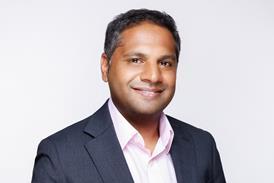

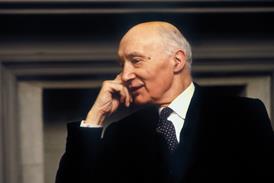
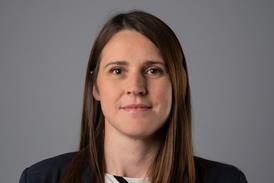
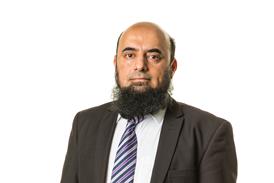









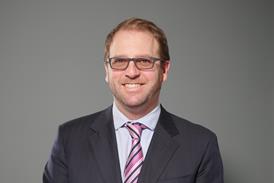










No comments yet